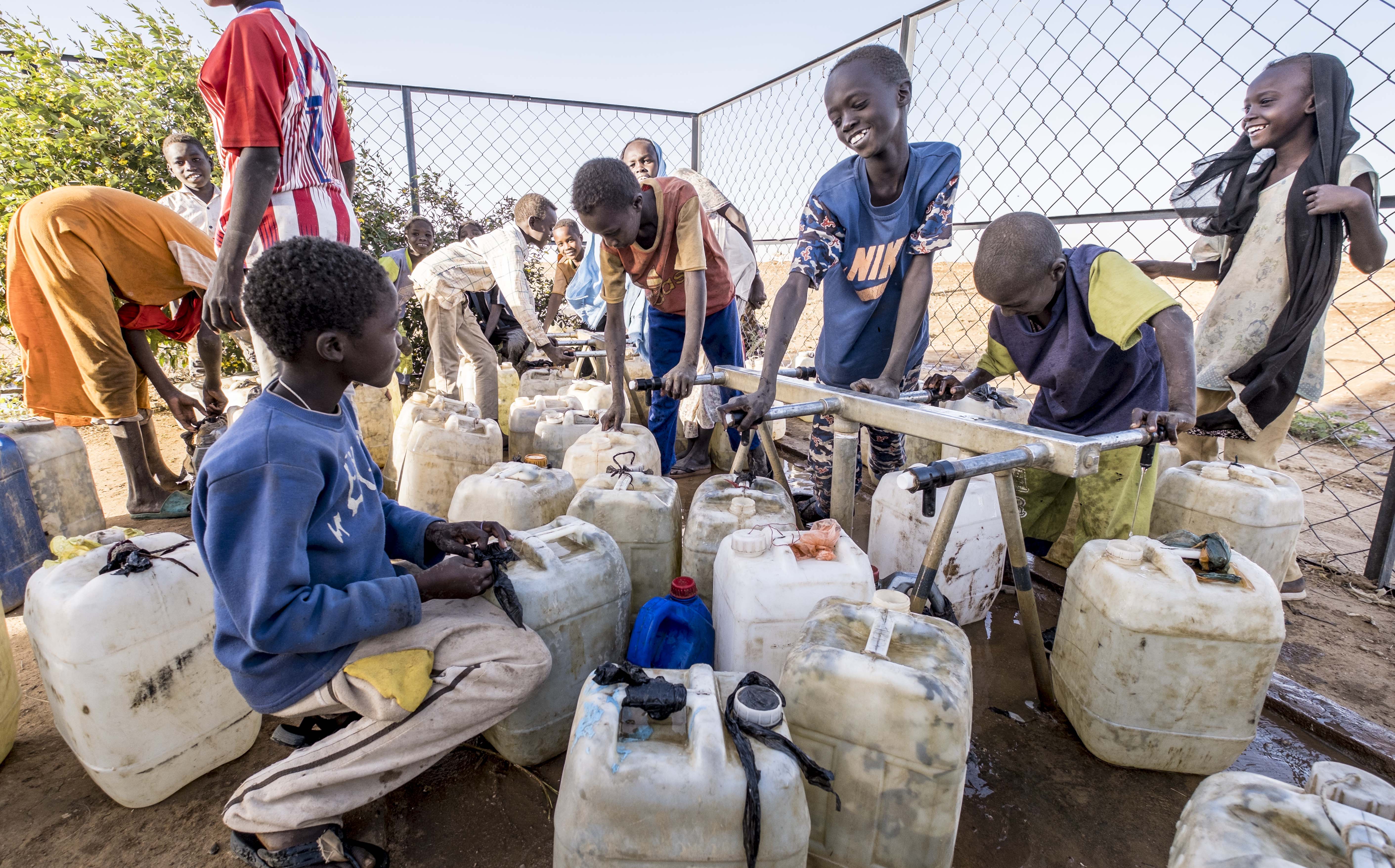How Solar Water Pumps Empower Displaced Communities in Conflict Zones in Sudan
Water, not War
January 7, 2024

Imagine being forced to flee your home, seek shelter in overcrowded places in unfamiliar environments, and face the daily struggle for survival.
For people who are displaced across the globe, access to clean water is often a luxury, not a right. This precious resource, which so many of us take for granted, becomes a lifeline, not just for quenching thirst, but also for improving sanitation, preventing disease, and even fostering peace.
This is where solarized water pumps emerge as examples of hope, empowering communities and transforming lives in the midst of conflict and displacement. These clever systems tap into the sun's power to pump water from underground sources, bypassing contaminated surface water and offering a reliable, independent supply of clean drinking water.
In Sudan the influx of Internally Displaced Persons (IDPs) following the conflict outbreak in April 2023 significantly overwhelmed already strained infrastructure in host communities. Access to clean water has become a critical bottleneck, leading to outbreaks of waterborne diseases, increased tensions over limited resources, and a constant struggle for basic needs.
Solarizing water pumps offers a game-changer in this desperate scenario.
Now, imagine a world where access to clean, drinkable water isn't an interrupted responsibility, but a readily available source of life and opportunity. This is the reality UNDP is working to create in Sudan. By solarizing water distribution pumps, UNDP is helping to deliver the following benefits:
Uninterrupted water supply: No more relying on grid electricity or expensive fuel – the sun's power keeps water flowing consistently, even in remote areas. This means less downtime for pumps, more reliable access for communities, and improved sanitation and hygiene.
Securing clean drinking water: Solar pumps tap into underground sources, free from surface contamination. This provides safe, drinkable water, meaning people are healthier and rely less on potentially unsafe alternatives.
Empowering Women and reducing Gender-Based Violence: Women and girls often bear the burden of fetching water, exposing them to risks of violence and limiting their time for education and work. Solar pumps bring water closer to homes, freeing up precious hours and restoring a sense of dignity and control.
Combating Waterborne Diseases: Access to clean water is crucial for preventing waterborne illnesses. By reducing reliance on potentially unsafe sources, solar pumps help prevent cholera, dysentery, and other waterborne diseases that threaten displaced communities and their hosts.
Building Community Resilience and Conflict Prevention: Local procurement of materials and community involvement in fence building and labor not only reduces costs but also fosters ownership and social cohesion. This strengthens resilience against future challenges, including climate change. Competition for dwindling water resources can easily spark tensions and even violence. Solar pumps provide equitable access, easing pressure on existing infrastructure and promoting cooperation over this vital resource.
Social Cohesion and Ownership: Community involvement in pump installation and maintenance fosters a sense of ownership and responsibility for this vital resource. This strengthens social cohesion, promotes integration between IDPs and host communities, and builds resilience for the future.
Creating Emergency Employment and Livelihoods: Installing and maintaining the pumps create work opportunities, particularly for vulnerable populations. This boosts local economies and empowers communities. Clean water enables IDPs to work, for example in farming, food preparation, and small businesses. This fosters self-reliance, reduces dependence on aid, and jumpstarts economic recovery.
With support from the Crisis Bureau and Regional Bureau for Arab States, UNDP in Sudan has successfully constructed solar powered water yards and solarized water distribution points in 30 locations throughout the country since the outbreak of conflict. This has made clean water accessible to a million people in Sudan, with a focus on areas with a large number of internally displaced people and highly strained host communities.
Solarizing water distribution is not just about technology, for many it’s a lifeline. It’s about hope and transforming lives in the face of conflict and displacement, it’s about ensuring clean water as a basic human right, empowering women and children, and building stronger, more resilient communities.
Now is the time for all of us to stand together with displaced communities and work towards durable solutions by turning scarcity into security, conflict into cooperation, and despair into hope.

 Locations
Locations


